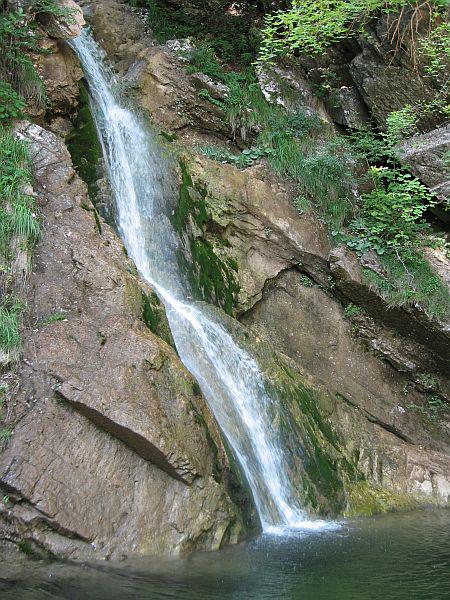
The waterfall is formed when the stream known as Kozjak, a tributary of the Soča, flows down a precipitous rock wall into a magnificent, cavern-like amphitheater. The area can only be reached following a two-kilometer trail that begins near the village of Drežnica, proceeds along the riverbank, crosses the river gorge in a series of bridges, an enters a moss-covered canyon. However, some of the best views are reserved for kayakers and canyoners who choose to brave the stream below.
The water that feeds the Kozjak waterfall comes to the surface far above the tree line – at an altitude of more than 2000 meters. The stream forms six waterfalls as it makes its way toward the valley, but the Great Kozjak Waterfall, which measures 15 meters in height, is the most spectacular, especially when a narrow beam of light illuminates it, giving it a golden glow.
The splendor does not end when the water strikes the surface below. There, it collects in an emerald pool that adds a touch of majesty to the entire amphitheater. Some people even swim in the pool, although the mountain-fed water is cold even during the height of summer.
In recent years, the Soča River Valley has become a popular tourist destination, but Kozjak remains off the beaten path, even though many consider it Slovenia’s most beautiful waterfall. It rewards those willing to seek it out with a view that has changed little since it was first seen by humans.

































































